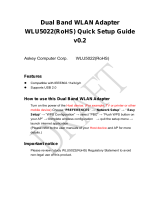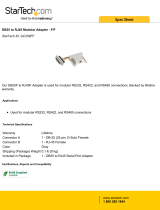
MatchPort b/g Integration Guide
Copyright and Trademark
© 2011 Lantronix. All rights reserved. No part of the contents of this book may be
transmitted or reproduced in any form or by any means without the written permission
of Lantronix. Printed in the United States of America.
MatchPort®, with its patent-pending technology, is a trademark of Lantronix. Ethernet
is a trademark of XEROX Corporation. UNIX is a registered trademark of The Open
Group. Windows is a trademark of Microsoft Corporation.
Contacts
Lantronix Corporate Headquarters
167 Technology Drive
Irvine, CA 92618, USA
Phone: 949-453-3990
Fax: 949-450-7249
Technical Support
Online:
www.lantronix.com/support
Email/Chat:
www.lantronix.com/support
Sales Offices
For a current list of our domestic and international sales offices go to the Lantronix
web site at
www.lantronix.com/about/contact/.
Disclaimer
This equipment has been tested and found to comply with the limits for a Class B
digital device, pursuant to Part 15 of the FCC Rules. These limits are designed to
provide reasonable protection against harmful interference in a residential
installation. This equipment generates, uses, and can radiate radio frequency energy
and, if not installed and used in accordance with the instructions, may cause harmful
interference to radio communications. However, there is no guarantee that
interference will not occur in a particular installation. If this equipment does cause
harmful interference to radio or television reception, which can be determined by
turning the equipment off and on, the user is encouraged to try to correct the
interference by one of the following measures:
Reorient or relocate the receiving antenna.
Increase the separation between the equipment and receiver.
Connect the equipment into an outlet on a circuit different from that to which
the receiver is connected.
Consult the dealer or an experienced radio/TV technician for help.
This device complies with Part 15 of the FCC Rules. Operation is subject to the
following two conditions: (1) This device may not cause harmful interference, and (2)
this device must accept any interference received, including interference that may
cause undesired operation.
This device is intended only for OEM Integrators. The OEM integrator should be
aware of the following important issues.
Labeling of the End Product
The label on the end product incorporating the MatchPort b/g module must clearly
state that it contains an FCC-approved RF module. For example, “This product
contains an RF transmitter ID# (put FCC or IC module grant number here).” The
actual grant number is on the MatchPort b/g label.






















